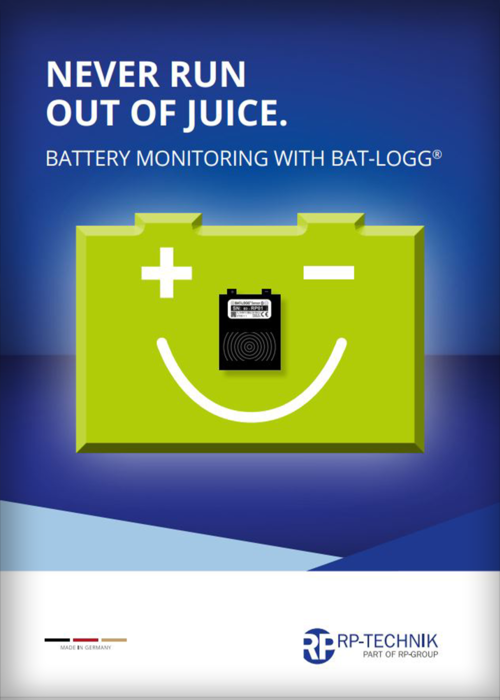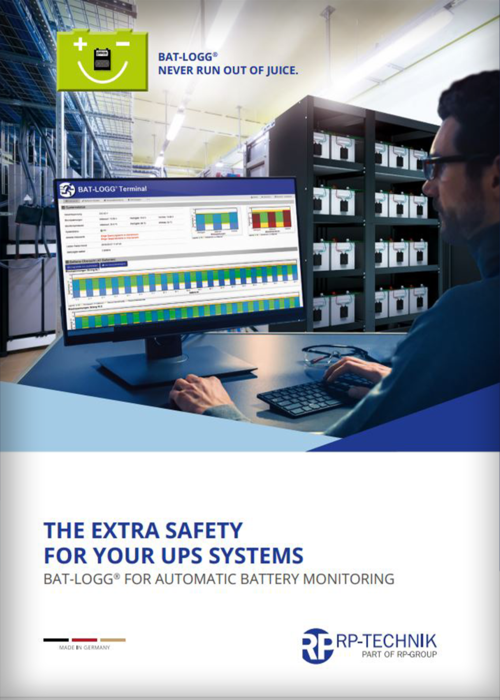BAT-LOGG®
The benefits at a glance
SAFETY
BAT-LOGG® measures the voltage and temperature of every single battery at short intervals, documents the measurements and automatically reports errors.
MONITORING
The system is able to detect, document – and communicate errors.
COST REDUCTION
BAT-LOGG® simplifies planned maintenance work as the need to manually measure and document every single battery becomes superfluous.
SIMPLE INSTALLATION
The sensors are conveniently and safely connected to the batteries using forked cable lugs.
HEALTH AND SAFETY AT WORK
BAT-LOGG® puts an end to manually measuring every single battery. This reduces risk levels at work resulting from potential electric shocks.
Sensor module
Every single battery is fitted with a BAT-LOGG® sensor module, which measures the voltage and temperature 5 to 6 times a minute. The measurement data is transferred via the energy cable – so there is no extra cabling – to the BAT-LOGG® terminal. Not only is data transferred in real time, but also repeatedly and redundantly over a longer period, which all contributes to a high level of robustness.
BAT-LOGG® is the only system to transfer measurement data using the energy cable – powerline transmission. This process requires no additional cabling. Alternatively, the data can also be transferred using a BUS cable. Simple and time-saving installation with forked cable lugs. Simply stick to the housing using the glue dot. Job done.
Terminal
The BAT-LOGG® terminal is the control centre of the battery monitoring system. It comprises one or more BAT-LOGG® interface modules and an industrial PC based on Linux. This is where the measurement data sent by the sensors and received by the interface module is checked and stored in an SQLite database. The BAT-LOGG® terminal can be incorporated into an existing IT infrastructure via LAN or WLAN.
Software
The BAT-LOGG® software in the terminal checks the measurement data on the basis of set error criteria and reports any errors and other events by sending an e-mail, for example. It also provides a web interface, enabling configuration, the display of measurement data, error analysis and data backup. It can be accessed from an end device with a web browser (PC, tablet or smartphone) provided the device is available in the same network.
DOWNLOADS

























